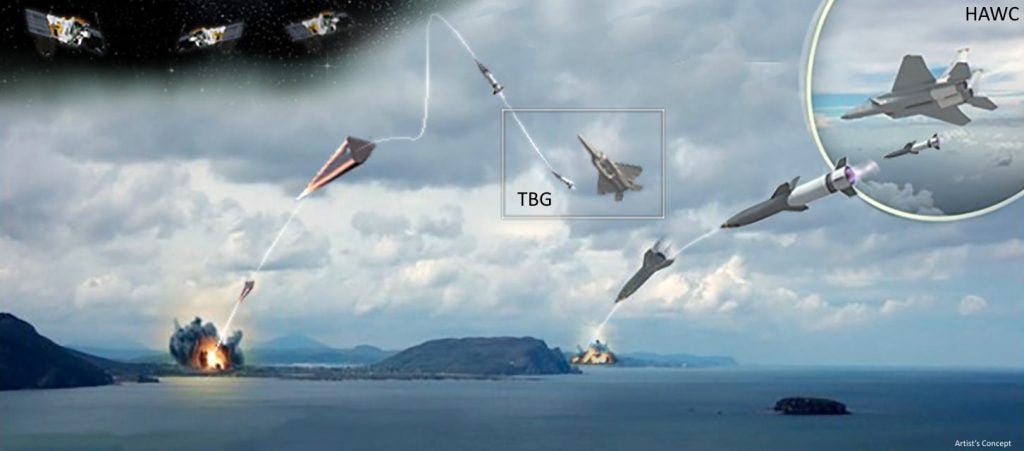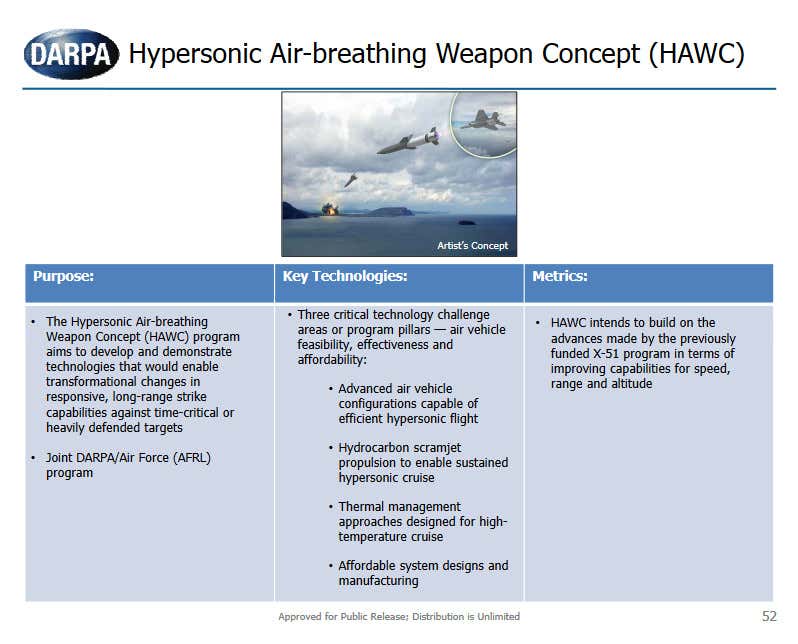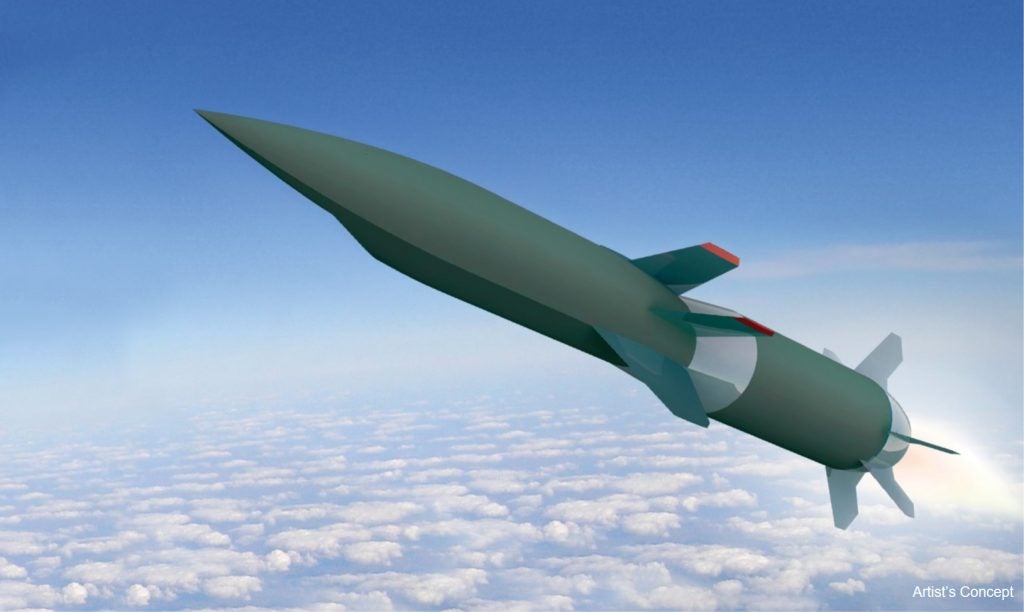HAWC Hypersonic Cruise Missile Readies for Free-Flight Testing
DARPA, the Defense Advanced Research Projects Agency, earlier this month announced a major milestone has been achieved in the development of the HAWK or Hyper-sonic Air-breathing Weapon Concept for the United States Air Force. The “captive carry” tests are a necessary precursor to free-flight testing of the platform.
Two developmental variants of the HAWC were successfully evaluated through a “captive carry” exercise with the HAWCs piggy-backing on an unspecified aircraft to test the designs’ likely success in free-flight. DARPA were pleased with the results with HAWC Project Manager Andrew ‘Tippy’ Knoedler commenting;
“Completing the captive carry series of tests demonstrates both HAWC designs are ready for free flight. These tests provide us a large measure of confidence- already well informed by years of simulation and wind tunnel work- that gives us faith the unique design path we embarked on will provide unmatched capability to U.S. forces.”

Lockheed Martin and Raytheon Technologies are partnering with DARPA and the USAF in the development of the HAWK prototypes (as previously reported by Overt Defense) along with input from the Missile Defense Agency, the US Navy, and the National Aeronautics and Space Administration (NASA).
Free-fight tests are to be scheduled to begin later this year with a focus on “…hydrocarbon scramjet-powered propulsion and thermal management techniques to enable prolonged hypersonic cruise.” Thermal management techniques to manage the thermal stresses of hypersonic flight will also be key. The eventual production platform is envisaged to be able to travel beyond Mach 5 or five times the speed of sound.

Other nations aggressively pursuing hypersonic technologies include Russia (with the ‘Tsirkon’) and China (with the DF-17). Most recently, India launched its own Hypersonic Test Demonstrator Vehicle (HSTDV) achieving reports speeds of Mach 6 as we reported last week. Hypersonics are seen as a way to evade enemy air defenses through speed and an unpredictable trajectory, overwhelming traditional tracking and targeting systems.

